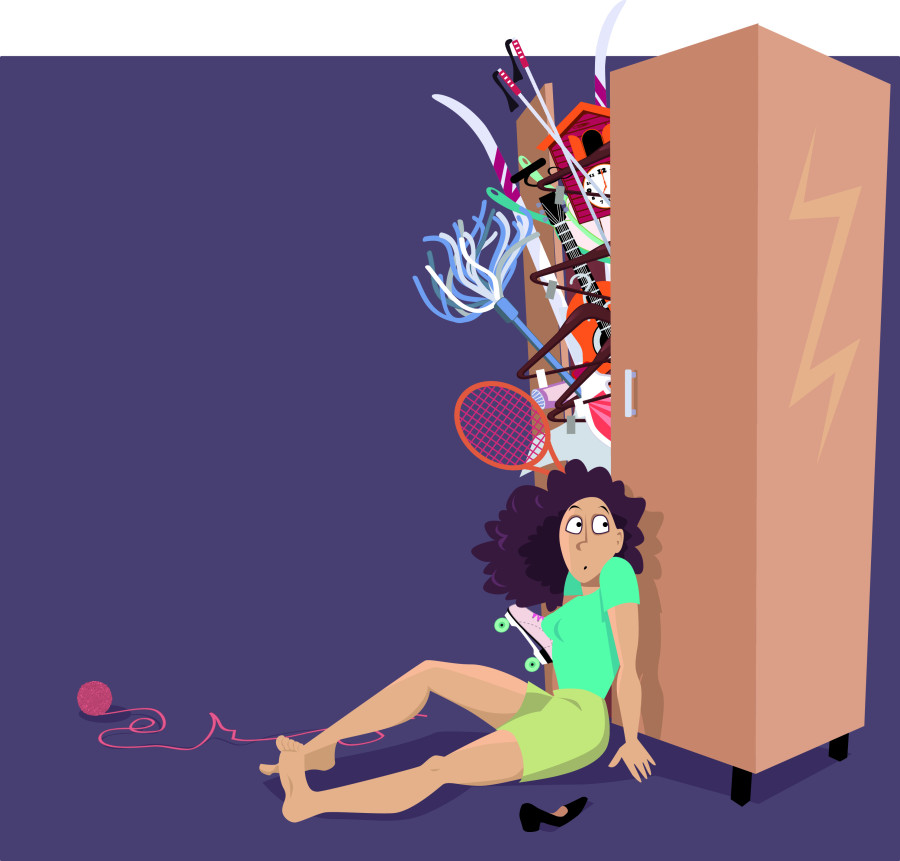Culture & Lifestyle
When holding on becomes harmful
Behind the clutter lies a deeper mental health struggle, as hoarding disorder quietly disrupts lives, homes, and well-being.
Aarya Chand
Hoarding disorder is a mental health condition characterised by persistent difficulty discarding possessions, regardless of their value, leading to excessive clutter that disrupts living spaces and daily functioning. It is driven by distress, strong emotional attachment to items, or fear of losing them.
Hoarding is more than just collecting mess; it’s a recognised mental health disorder that affects around 2 to 6 percent of the general population. Due to shame, denial, or misdiagnosis, it often remains hidden for years, impacting daily functioning and quality of life before receiving adequate clinical consideration and treatment.
Anjina Sapkota, a psychologist at Freedom Foundation, specialising in Clinical Psychology and co-founder of Mind Well Solution, works closely with psychiatric patients and community programmes in Jajarkot. She highlights the psychological roots of hoarding disorder and the importance of early intervention through clinical care and community awareness.
What is a hoarding disorder, and how is it different from being messy or a collector?
Hoarding is a clinically recognised mental health condition and has been classified as Hoarding Disorder (HD) in the DSM-5. Individuals with this disorder experience persistent difficulty discarding or parting with possessions, regardless of their value. In many cases, the behaviour is further intensified by compulsive acquisition—such as excessive buying, collecting, or even stealing—leading to increasingly unmanageable living environments.
Unlike collectors, who typically derive joy and pride from their curated items and maintain clean, organised spaces, hoarders often feel overwhelmed, distressed, and ashamed. As possessions accumulate, essential living areas may become unusable, severely disrupting daily life, interpersonal relationships, and physical health. Hoarding is not simply a matter of being messy or sentimental; it involves specific clinical criteria and deeply rooted psychological patterns that require understanding and treatment.
What are the common signs and symptoms of this disorder?
Hoarding disorder is characterised by a persistent difficulty in discarding possessions, regardless of their actual value. A key symptom is the overwhelming urge to keep items and the intense anxiety or distress experienced at the thought of parting with them. Over time, this behaviour leads to excessive accumulation, with living spaces becoming so cluttered that they can no longer serve their intended purpose.
People with hoarding disorder often struggle with decision-making, tend to be perfectionistic, and may avoid discarding items altogether. Many lack awareness of the severity of their condition, which can further complicate intervention. The disorder also commonly results in emotional distress, social withdrawal, and strained relationships, significantly interfering with daily functioning. For a clinical diagnosis, these symptoms must not be better explained by another mental or medical condition.
What causes hoarding disorder? Are there specific psychological or environmental factors involved?
The causes of hoarding disorder are complex and often rooted in psychological, emotional, and environmental factors. While biology may play a role, it is typically psychological stress and emotional trauma that act as primary drivers. Individuals who hoard often have a deep emotional attachment to their belongings, viewing them as symbols of safety, memory, or control.
Past trauma, unresolved grief, or significant life disruptions can contribute to the onset of the disorder. In some cases, hoarding emerges as a coping mechanism—a way to guard against future loss or manage emotional pain. For many, even the thought of discarding items can trigger intense distress, reflecting how deeply intertwined these objects are with their inner experiences.
At what point does this become a serious mental health concern?
Hoarding becomes a serious mental health concern when the behaviour begins to interfere with daily life, personal relationships, or overall well-being. It goes beyond simple clutter when living spaces become unusable, safety is compromised, or the individual experiences significant emotional distress. Though early signs may appear during adolescence, the condition typically worsens with age and often becomes clinically evident by mid-life
Despite its impact, hoarding is frequently overlooked or dismissed, sometimes mistaken for untidiness or eccentric habits. Many individuals hide their struggles due to shame or denial. However, when hoarding disrupts normal functioning or coexists with other conditions like depression, anxiety, or trauma-related disorders, it signals the need for clinical attention and support.

How is hoarding disorder diagnosed? Is it considered a separate condition from OCD?.
Hoarding disorder is diagnosed when a person shows persistent difficulty discarding possessions, regardless of their actual value, due to a strong urge to save them and distress at the thought of letting them go. This behaviour must result in significant clutter that disrupts the use of living spaces and impairs daily functioning. For a formal diagnosis, these symptoms must meet the criteria outlined in the DSM-5 and cannot be better explained by another medical or psychiatric condition.
Clinicians often use standardised tools such as the Hoarding Rating Scale, Saving Inventory-Revised, and Clutter Image Rating to assess the severity of the disorder. Although hoarding was once considered a subtype of Obsessive-Compulsive Disorder (OCD), it is now recognised as a distinct condition with unique symptoms, neurological patterns, and treatment responses. However, it may still co-occur with OCD and other mental health disorders, which can complicate the diagnostic process.
What are the possible health and safety risks associated with hoarding?
Hoarding disorder poses serious health and safety risks, including infection, pest infestations, and respiratory problems due to overcrowded and unclean spaces. Cluttered rooms increase the chance of falls, fires, and blocked emergency exits. Early recognition and education are crucial for prevention, reducing stigma, and promoting timely intervention to protect physical safety and improve well-being.
What treatment options are available, and how effective are they?
Treatment for hoarding disorder often involves Cognitive Behavioural Therapy (CBT), which helps individuals change unhelpful thoughts and behaviours to reduce clutter and improve daily functioning. Family support, stable living environments, and early detection are vital for successful recovery. While challenges remain, combining therapy with a strong support system increases the chances of effective treatment.




 17.12°C Kathmandu
17.12°C Kathmandu














